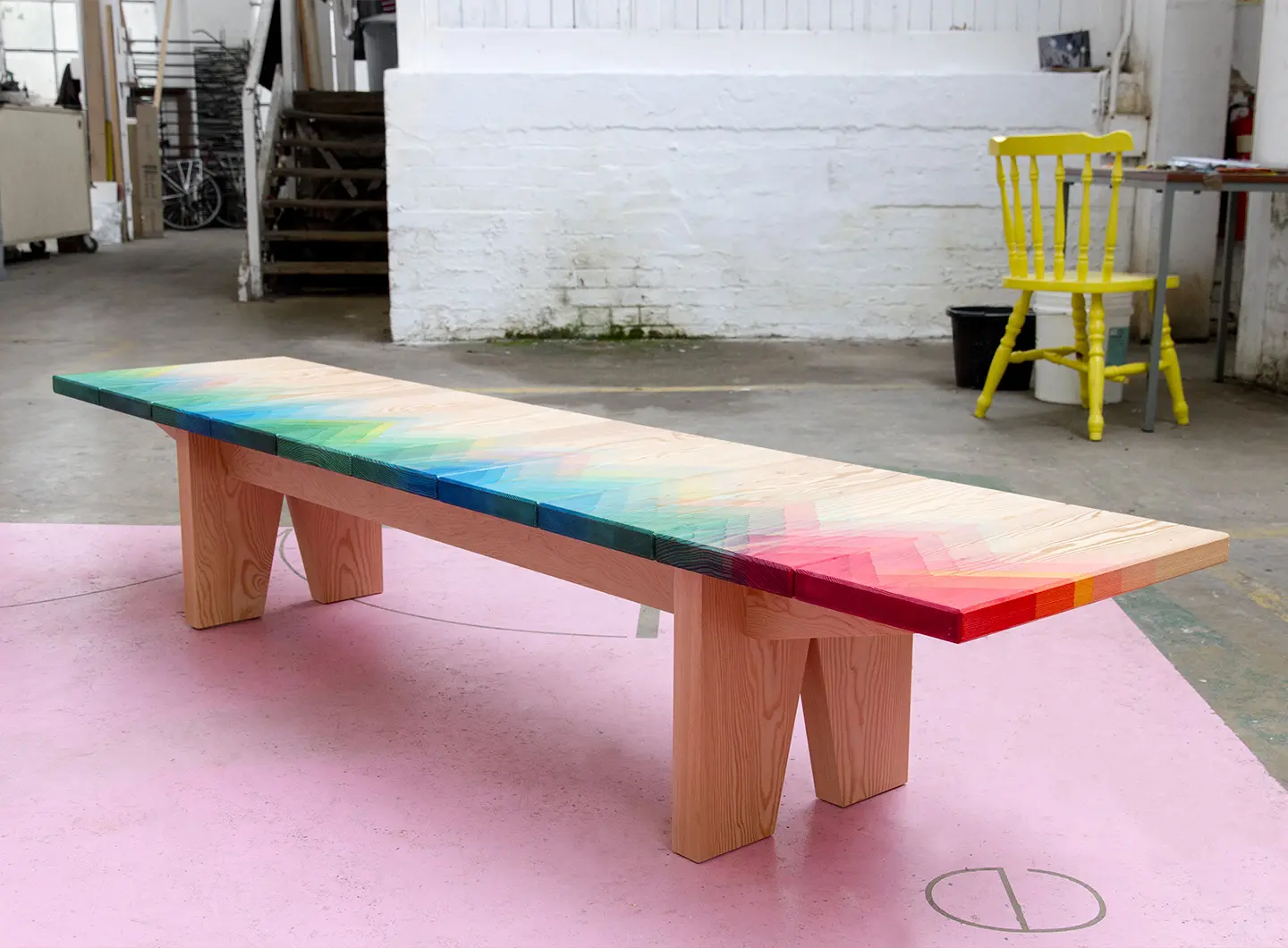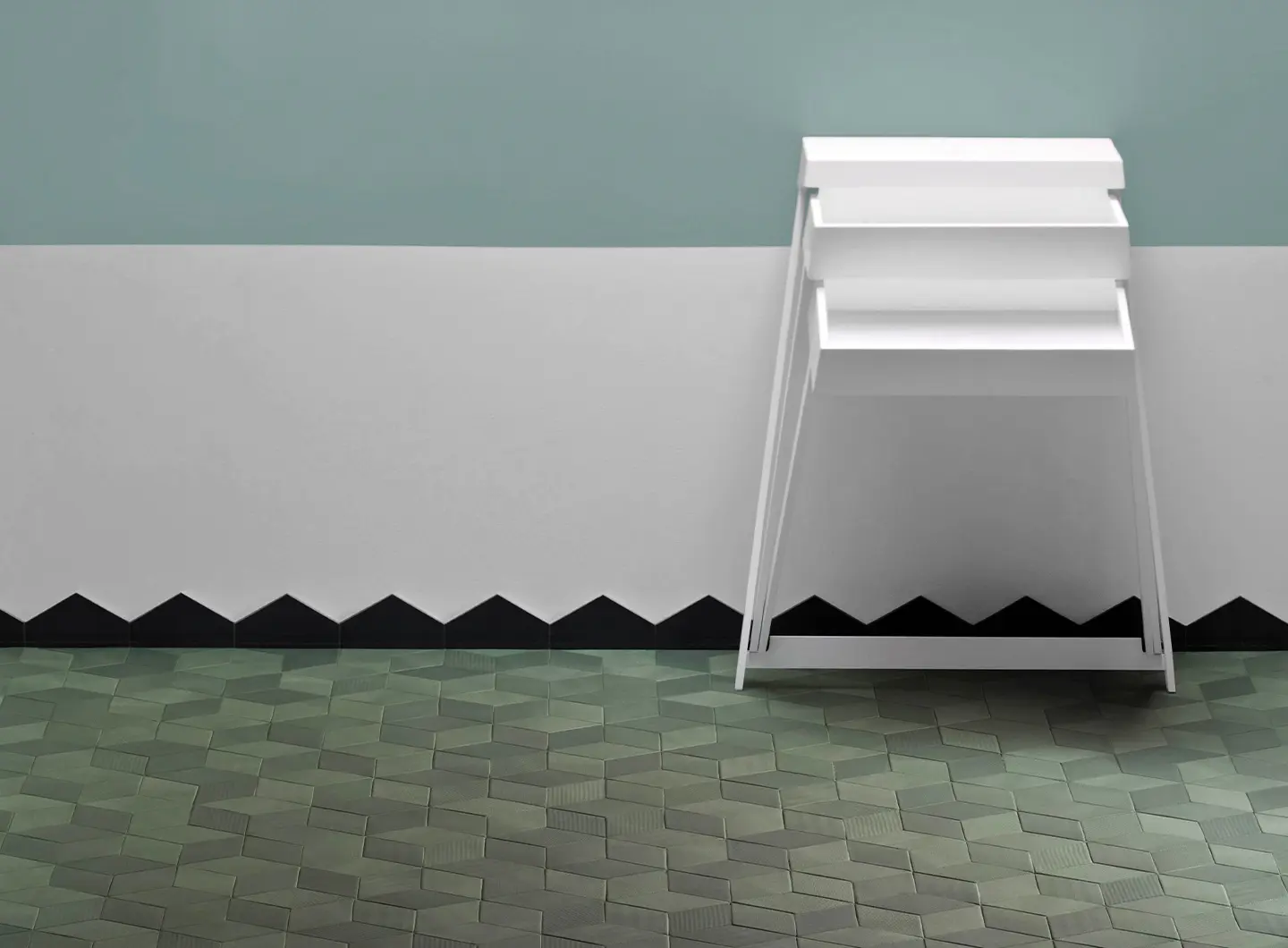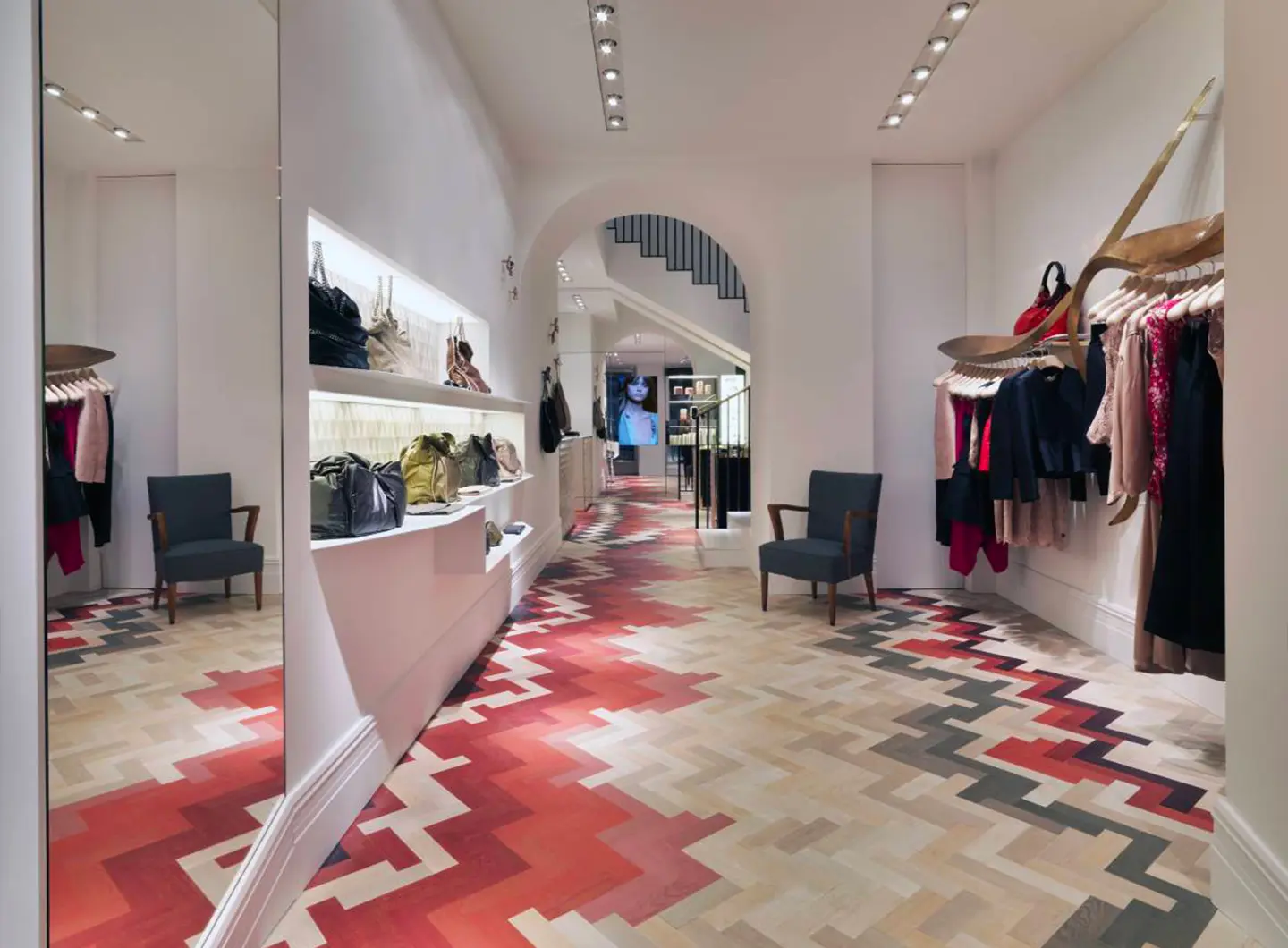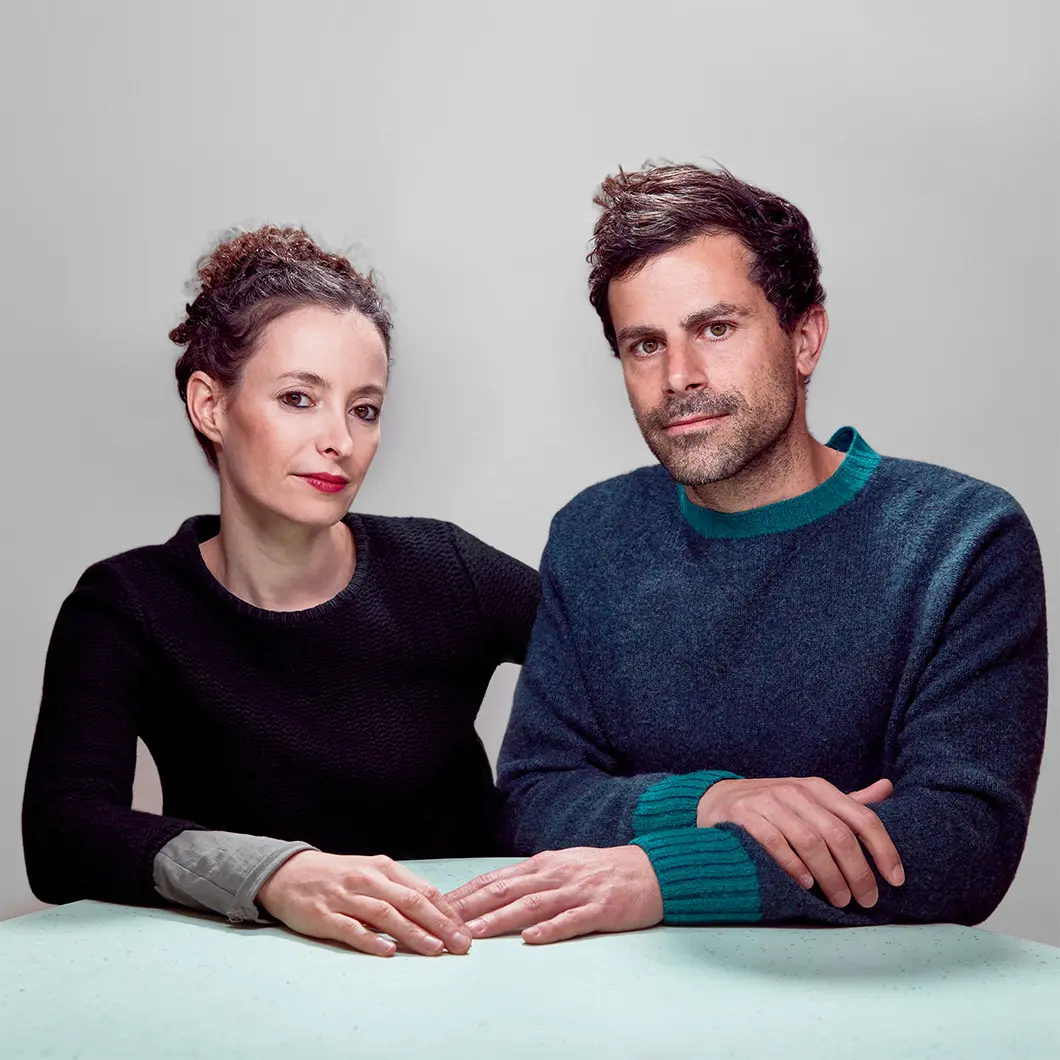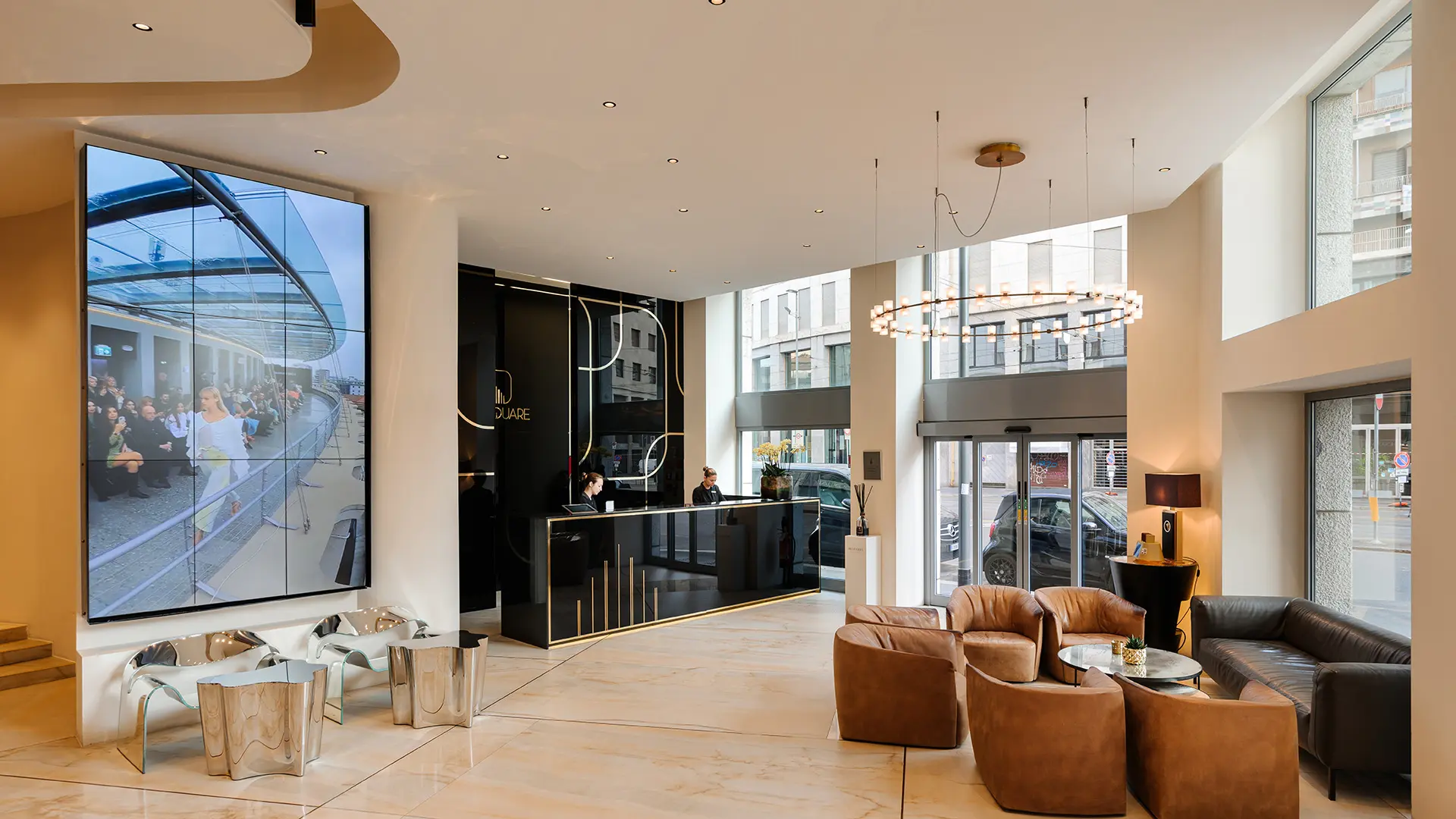In partnership with MiCodmc, a selection of establishments ripe for discovery during the 64th edition of the Salone del Mobile.Milano, from 21 to 26 April 2026
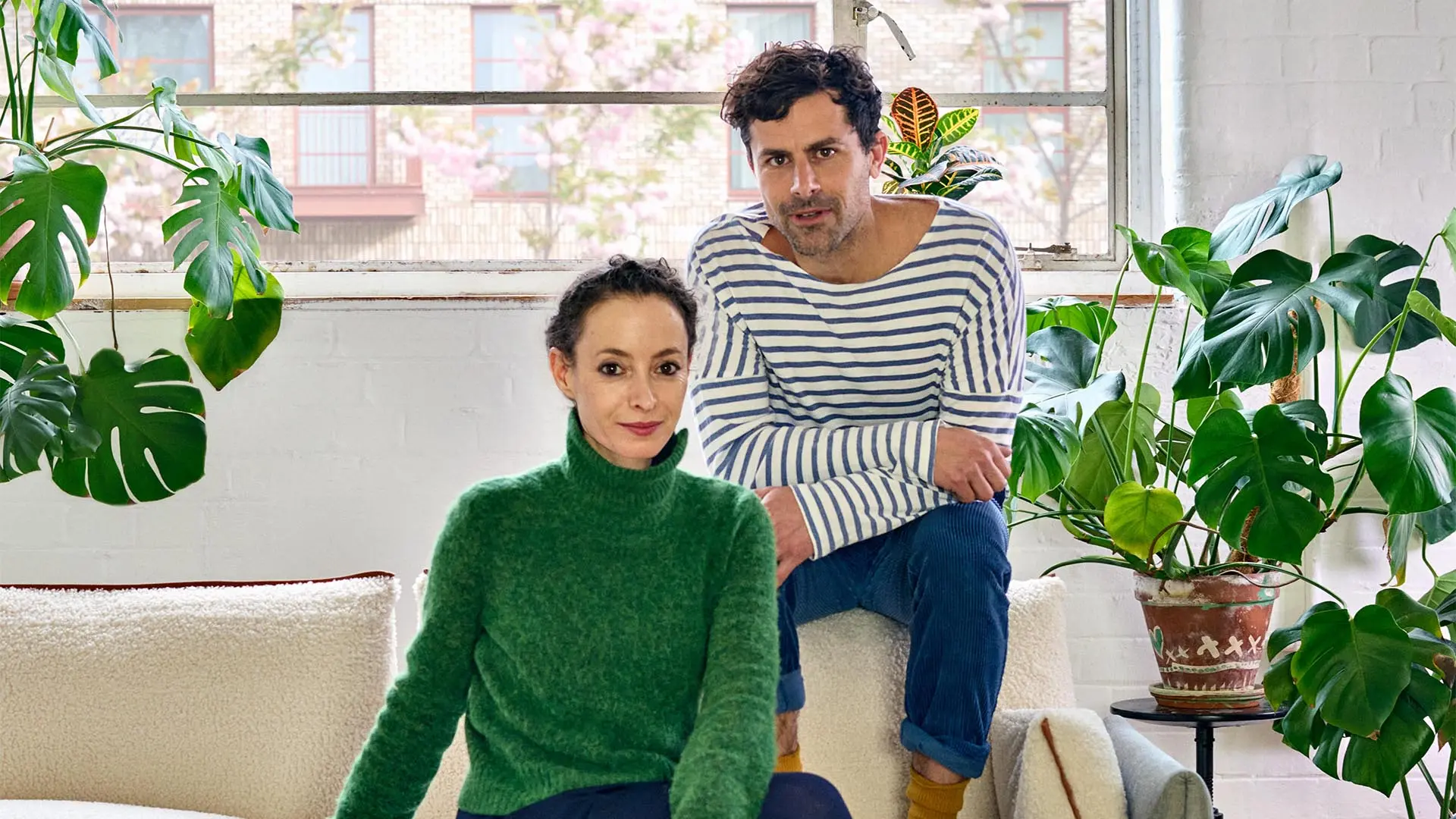
Raw Edges, Ph. Tom Mannion
A conversation with Shay Alkalay and Yael Mer, the London-based Israeli design duo that has been collaborating with international brands since 2007 and exhibits in the major international museums
The Israeli design duo Shay Alkalay and Yael Mer set up the multi-award-winning studio Raw-Edges in London in 2007, since when they have collaborated with brands such as Vitra, Louis Vuitton, Stella McCartney, Airbnb, Moroso, Cappellini, Kvadrat and Mutina, and seen their pieces go on exhibit in the major international museums. Modelling, joints and movement are characteristic of their work, the building blocks of their design approach, just as characteristic as the rainbow of fun, bold colours that has always been a feature of their design. They now say it’s time to give grey a chance, as in taking a moderate stance in relation to questions. They reassert this in an interview in which they talk about their journey, whilst also responding to highly topical questions from a creative standpoint.
I’m interested in the fact that everything is polarised in today’s society, either black or white. I partly blame social media where everybody seems to always have to take a clear-cut, definitive position. It shouldn’t be like that. We are at that stage in life when we should glorify grey. Nothing is wholly good or wholly bad. Life is a complex thing, and we need shades, gradations. We were in Tel Aviv recently for strictly family-related matters, and we realised that the city is sad, in a really miserable condition.
We haven’t got the faintest idea, but it really is a turbulent time that represents the worst -case scenario for all parties involved. The political leaders aren’t taking human lives into account. When an action is taken, the consequences need to be considered, along with potential reprisals. Let’s hope for the best.
We met in Jerusalem when we were studying industrial design at the Bezalel Academy of Art and Design, Israel’s oldest school of art, which has a modern, experimental, rather Bauhausian stamp, and was set up before the country was officially established. We then worked together for two years, travelling a lot, especially in Japan. Then came the chance of a study bursary at the Royal College of Art in London. The Israeli designer Ron Arad headed the course. When we graduated, there was a design exhibition in Jerusalem that had come from the British capital, a combination of Anthony Dunne and his Speculative Design which we’d never heard of before. Basically, thinkers that got their heads around design, solutions to problems, relationships with objects, conceptual matters, etc. We’d never been to London, but we instinctively felt that it was the right place to go.
It should enrich and inspire our lives, making them more interesting and, on some level, entertain us. With different approaches: for example, when we designed the Modular Sofa for Cozmo, it was a question of creating a piece that was aesthetically pleasing as well as being well made, comfy, inexpensive and produced in the United Kingdom; with Louis Vuitton it was completely different, more bound up with expressing an idea, which is what happens when you create a sculpture. The challenge is to always be creative. We’ve chalked up experience, for example, working with various Italian brands, Cappellini, Moroso and Mutina, with the Swiss at Vitra and the British at Established&Sons and Stella McCartney. We believe that design should be for everyone, and we love inventing new solutions. Israel is a young country that invented itself, creative by definition, and we reflect that.
Production costs are often not strictly related to it, but to associated factors such as storage, relocation, transport and surplus costs that have to be built into them. We need to reconsider these aspects from an optimisation point of view. The sofa mentioned previously has a base and “jackets” that can easily be changed or replaced where necessary, or even to revamp it. This allows for the flexibility of having a variety of covers as well as a limited number of sofas or sofa parts in the warehouse. This helps it last longer.
At college we studied mechanisms, movements and animation a lot. Of necessity, drawers have to be moved to be used. So, we tried to play with the geometry of a traditional chest of drawers, which is always the same, and try to do so in a surprising and magical way. At the time, the designer Martino Gamper had organised an exhibition by students at the Royal College of Art during one of the London Design Festivals at which we had presented the prototype of this particular piece. Alasdhair Willis (former editor of Wallpaper magazine and founder of the brand Established & Sons, Ed.) saw it and wanted it, and six months later we presented it at the Salone in Milan.
We also presented another piece at that exhibition, a stool with a foam base, some of which ended up in collectors’ galleries and were mass-produced by Cappellini. However, we had a few conception problems – the foam continued to expand – and it was soon taken off the market and removed from the catalogue. This is proof that a design conceived as a work of art does not always find correspondence in a wider commercial distribution.
We’re not very good at putting ourselves forward. 99% of the time it’s the firms who come to us. Often it all stems from an exhibition, which is what happened with the Herringbones range for Vitra; or else we stick to the briefs produced by the brands.
We really enjoy interface with different people, it’s something that inspires us. Design is something that you do yourself, usually on your own with your own tools and your own ideas. We wouldn’t describe it as a solitary activity but certainly as an intimate one, which I guess is also the case in journalism. We love moving around, checking out places and situations that are perhaps described differently by the media. We think it’s a very healthy thing.

A Matter of Salone: the new Salone communication campaign
From a reflection on humans to matter as meaning: the new Salone communication campaign explores the physical and symbolic origins of design, a visual narration made up of different perspectives, united by a common idea of transformation and genesis



 Stories
Stories
